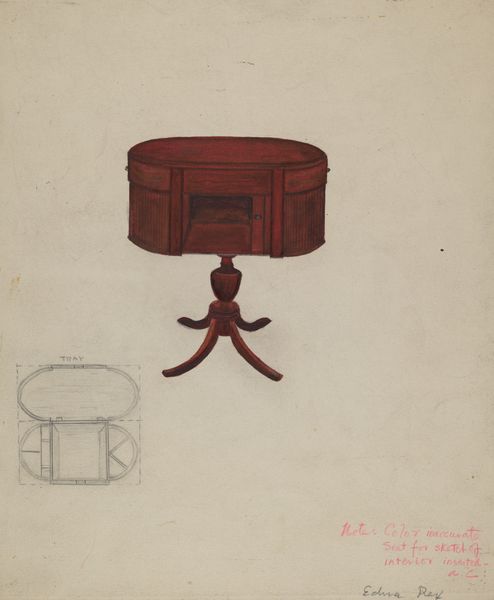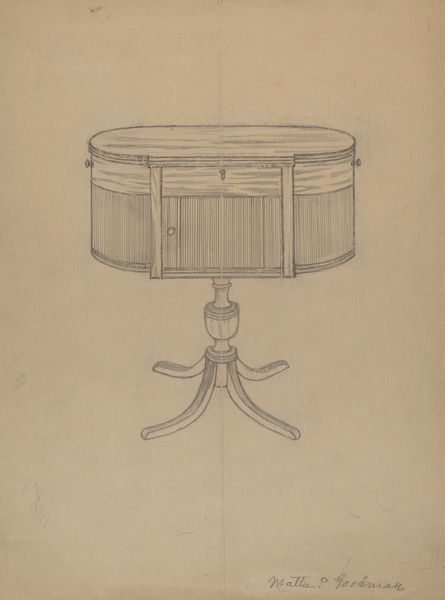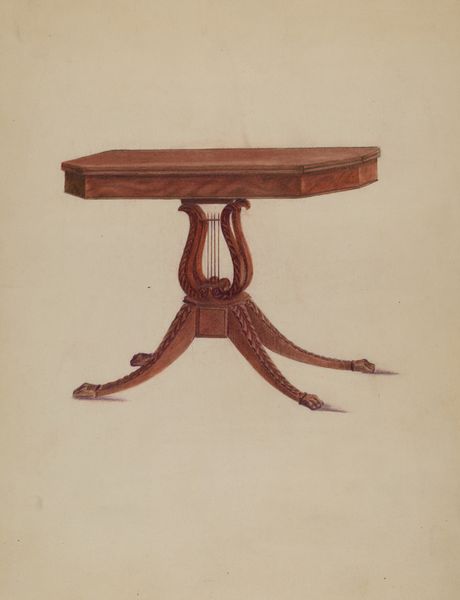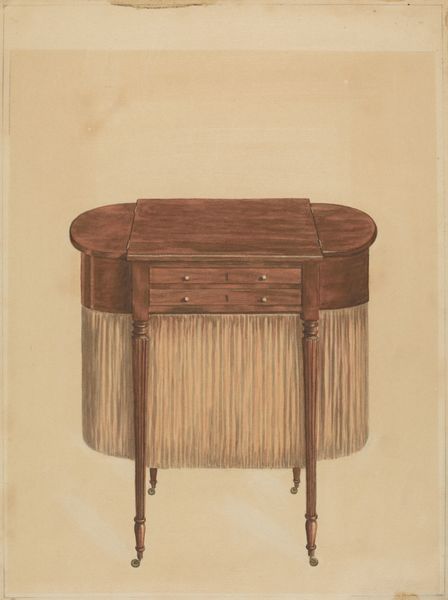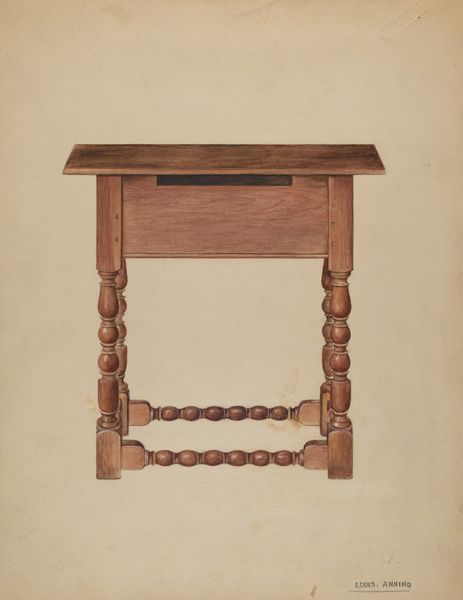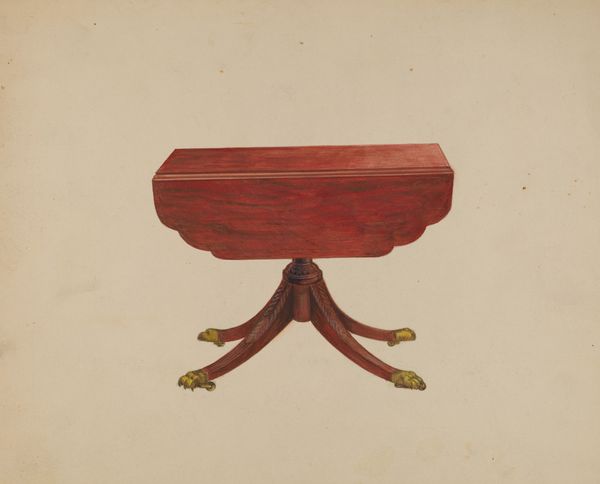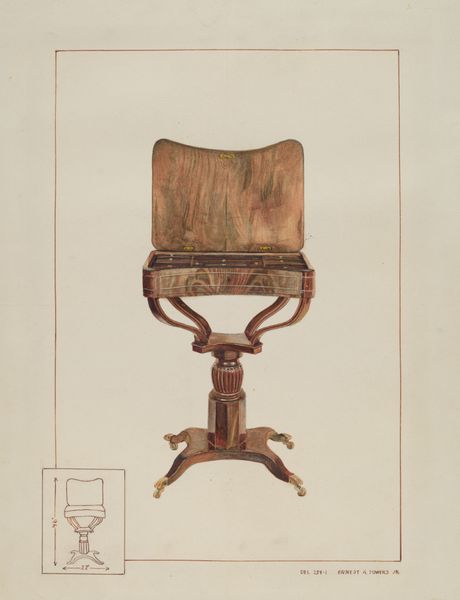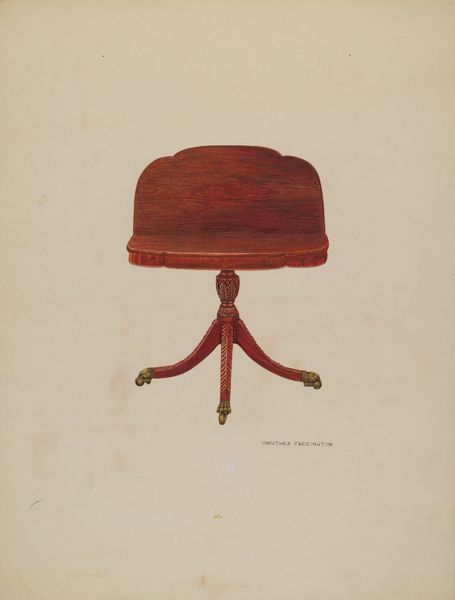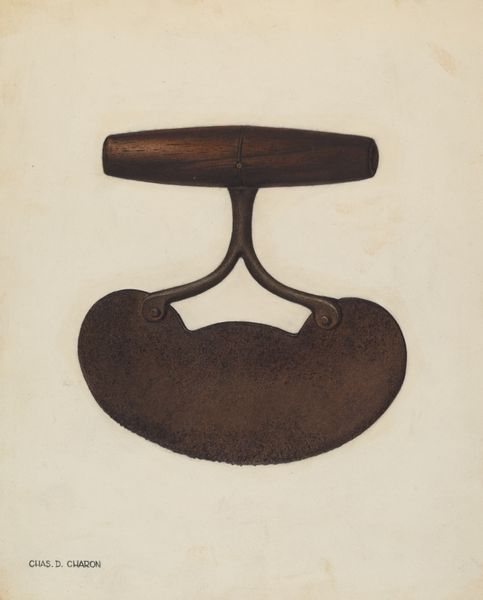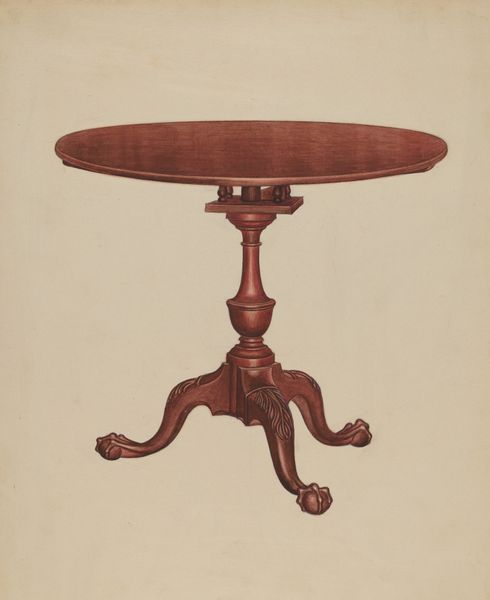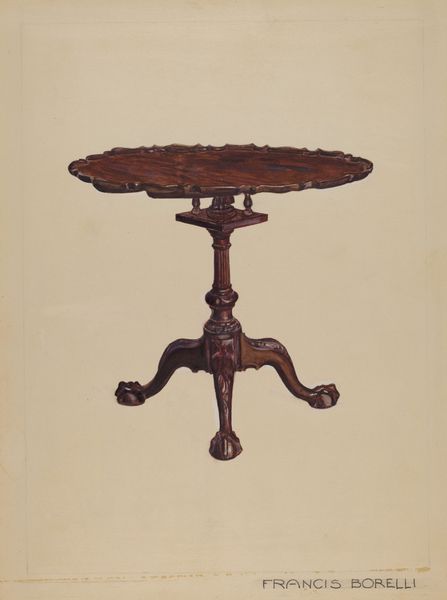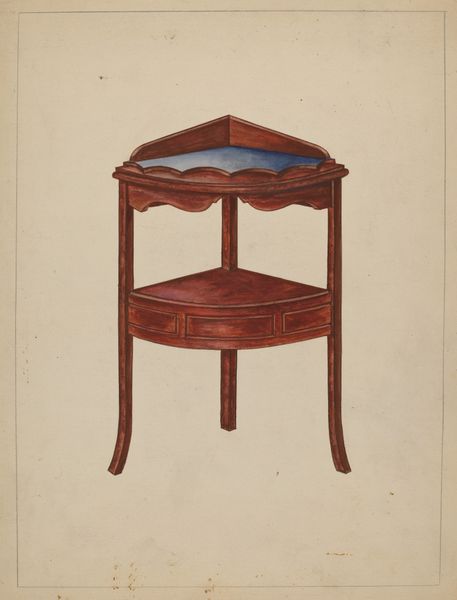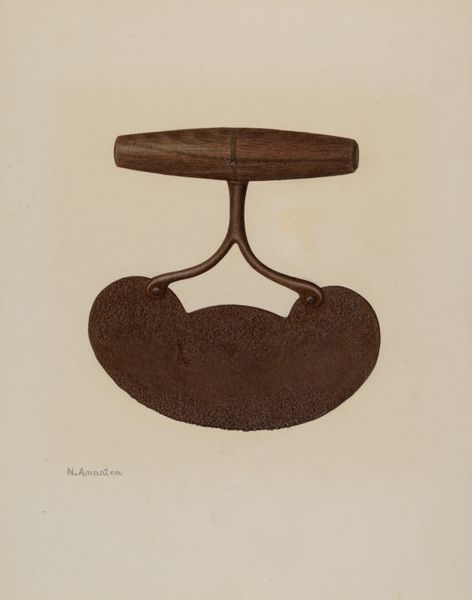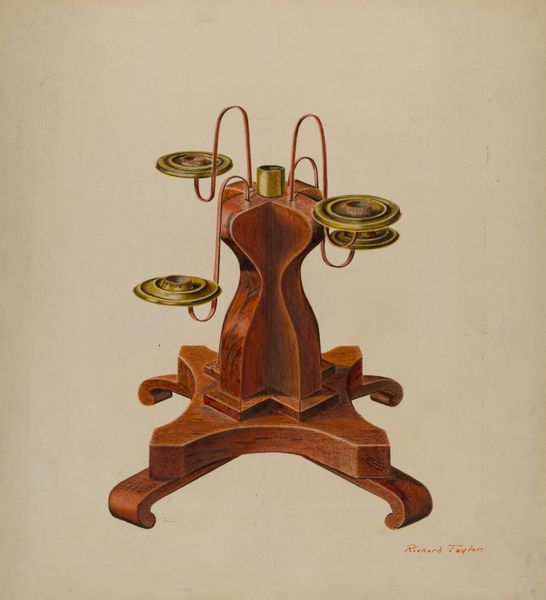
drawing, coloured-pencil, paper, watercolor
#
drawing
#
coloured-pencil
#
paper
#
watercolor
#
coloured pencil
#
academic-art
#
watercolor
Dimensions: overall: 35.4 x 24.5 cm (13 15/16 x 9 5/8 in.) Original IAD Object: 29 1/2"high; 28 3/4"long; 13 1/2"deep (cabinet)
Copyright: National Gallery of Art: CC0 1.0
Editor: So, this is "Duncan Phyfe Sewing Cabinet," a drawing dated circa 1939 by Mattie P. Goodman, rendered in watercolor and colored pencil on paper. The formality of the piece, its symmetrical, almost architectural structure, really strikes me. What do you see when you look at it? Curator: My attention is drawn to the interplay between the linear and curved elements. Consider the vertical reeding of the cabinet against its overall elliptical form. It creates a visual tension, wouldn’t you agree? The eye moves along these surfaces in anticipation of closure, of some resolution between straight and curved. Editor: I do see that. And the choice of warm browns throughout. Does that limit the way we experience the object? Curator: Not at all. Restraint in color can intensify our focus on form. Goodman carefully modulates the tonal values, giving volume to what could be a very flat presentation. Notice how light plays across the top surface, articulating the subtle convexity. Ask yourself what that does for our apprehension of it. Editor: It definitely makes it feel more real, less diagrammatic. Like an object that exists in space, rather than just a representation. So, is the tension between line and curve the essence of this work? Curator: Perhaps not the "essence," but it is certainly a key structural component that directs our gaze. We could explore other aspects - the interplay between texture and plane. It is complex, no? Editor: Absolutely. I initially saw just a drawing of a cabinet, but now I see layers of careful choices in form and light. Thanks! Curator: Indeed, these layers and choices constitute the artist’s approach and, subsequently, the viewer’s. It reveals the rigor behind the drawing and the construction of artistic understanding.
Comments
No comments
Be the first to comment and join the conversation on the ultimate creative platform.
